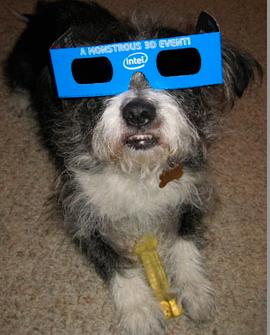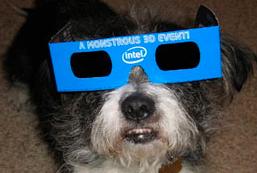 Understanding how to introduce and change distance, duration, and distraction can make all the difference between a frustrating and a successful dog training experience. Distance is how far you are from your dog while your dog performs a cued behavior. With the stay and come cues, you might be right next to your dog or 20 feet away. Duration is how long you expect your dog to perform a behavior. Distraction is the amount and intensity of other stimuli in the environment. A quiet empty room with no interesting smells and nothing happening nearby is a low distraction environment. A crowded dog park is a high distraction environment.
Understanding how to introduce and change distance, duration, and distraction can make all the difference between a frustrating and a successful dog training experience. Distance is how far you are from your dog while your dog performs a cued behavior. With the stay and come cues, you might be right next to your dog or 20 feet away. Duration is how long you expect your dog to perform a behavior. Distraction is the amount and intensity of other stimuli in the environment. A quiet empty room with no interesting smells and nothing happening nearby is a low distraction environment. A crowded dog park is a high distraction environment.
For some behaviors only two of the 3D’s may apply. For example, it makes sense to talk about distance and distraction with the come cue, but not duration, since you want your dog to come to you as fast as possible. With heeling, duration and distraction apply but not distance, since heeling means your dog is walking right next to you.
When teaching your dog a new behavior start with all three variables at a minimum. With stay, for example, begin by asking your dog to stay for two seconds, with you right next to your dog, with minimal distraction. Increase the 3D’s gradually, one at a time, beginning with duration. When your dog can stay consistently for two seconds, increase the duration by two seconds. If you increase the duration and your dog stops being successful, you have increased the duration too much too quickly. When building duration I like to count the seconds loud enough for my dog to hear me so he knows I haven’t forgotten about him and should continue the behavior. Counting also helps me systematically increase duration. When your dog can consistently stay for 20 or more seconds, you can start increasing distance.
When you add distance, initially decrease duration. For example, if your dog can stay for 20 seconds, go back to back to 5 or 10 seconds when you increase distance. When your dog can stay for 5 or 10 seconds with you a few feet away, work back up to 20 seconds before adding more distance. When your dog can stay for 20 seconds at 20 feet, you are ready to introduce distraction. Introduce distraction the same as distance by initially decreasing distance and duration, and only increasing distraction when your dog can stay for 20 seconds at 20 feet through the increased level of distraction.
Keep in mind that your dog defines distraction. A quiet backyard might not seem distracting to you, but your dog may be flooded with sounds, smells, and movements you are oblivious to. Following this strategy of gradually introducing distance, duration, and distraction, in that order and one at a time, will set your dog up for success.
Send your dog training and behavior questions to [email protected].
Or put them in the comments section.
//essay-writ.org”;.



Write a Letter to the Editor on this Article
We encourage readers to offer their point of view on this article by submitting the following form. Editing is sometimes necessary and is done at the discretion of the editorial staff.